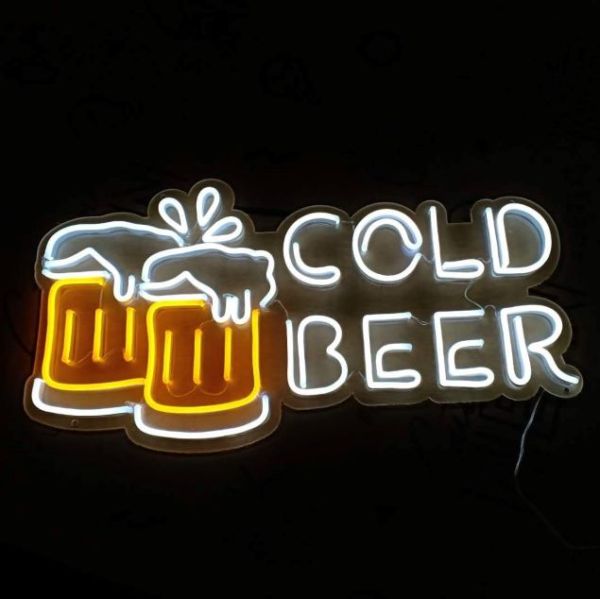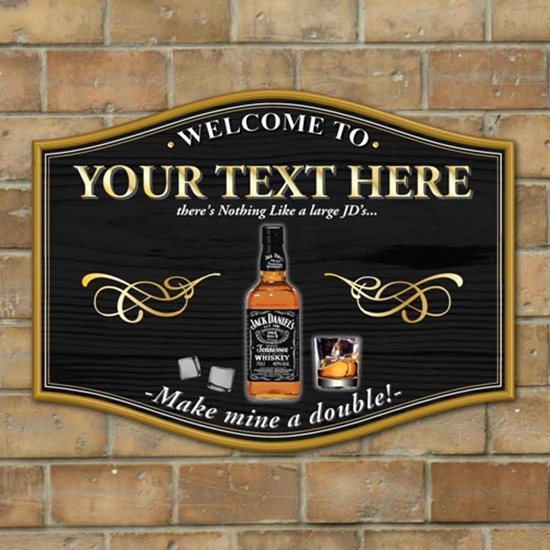Best Suggestions For Picking Pub Signs
Wiki Article
What Are The Differences In Bar Signs That Are Based On The Location?
The placement of bar signposts is vital. They are designed, placed, and purposefully placed to be effective in specific areas. Below is a breakdown on how bar signs differ depending on the location they're located: Signs for the exterior
The goal of the signage is to attract patrons and create the impression of a distinct distinctiveness for the bar.
Features: Big, eye at-tractive and frequently illuminated to improve visibility at night.
Materials: Sturdy materials such as metal, neon, LED, or weatherproof vinyl.
For instance, you could use marquee signs to advertise the name of the bar or even a logo.
2. Entrance signs
Goal: To greet patrons and give them initial details.
Features: Clear design, with branding and other elements.
Materials: wood, metal or illuminated signs.
Examples: "Welcome" signs, operational hours, and special announcements.
3. Interior Wall Signs
The purpose of this is to enhance the decor, give information and to create an atmosphere.
Feature: The size and design of the rugs can be altered to fit any decor.
Materials: Wood, metal, chalkboard, acrylic.
A few examples include menu boards, inspirational quotes, and theme-based decor signs.
4. Signs for Behind the Bar
The aim of this is to highlight the most important elements of the bar, such as its name, signature cocktails and the latest specials.
Highlights: The central point of the room is prominent and well-lit.
Materials: Chalkboards, LEDs, neon or digital displays.
Examples include name-of-bar signs as well as drink specials boards.
5. Signs on the ceiling and in hanging
Purpose: To enhance decor or provide instructions from above.
The ceiling is suspended and easily visible from different angles.
Materials: Materials that are lightweight, such as acrylic foam board and metal.
Some examples Some examples include: Directional signs, hanging decorative signage, and themed products.
6. Tabletop Signs
Purpose: To inform patrons of specific information on their table.
Features: Small fonts that are easily readable up close.
Materials: Acrylic, wood paper, laminated papers, and acrylic.
Example Table numbers, drink menus, or promotional cards.
7. Signs for Restrooms
Use: To clearly identify the exact location and the type of restrooms.
Features: Highly visible, with distinct symbols.
Materials: Metal, plastic, wood.
Example: Signs indicating male and female restrooms.
8. Directional Signs
Use: To direct patrons to the various sections of the bar.
Easy to read labels and arrows.
Materials: Metal, acrylic, wood.
Examples: Signs to indicate restrooms, exits and various seating areas.
9. Window Signs
Purpose: To draw attention to the bar and also inform passers-by.
Highlights: Easily visible outside, typically with lighting.
Materials: Vinyl decals, neon, LED.
Examples: Signs for promotions, hours of operation, and announcements about events.
10. Signs for events and promotions
Purpose: To inform patrons of special events and promotions or seasonal offerings.
Features: Attractive and sometimes temporary.
Materials: Vinyl, foam board and chalkboard.
Example Banners and event posters.
Particular Locations and Considerations
Visibility
Exterior and Entrance Signs: They must be easily visible from a distance in order to draw in customers.
Interior and Behind The Bar Signs Must be strategically placed for maximum Impact and readability.
Durability
Exterior Signs for the exterior. Make use of materials that are resistant to the weather.
Interior Signs are an excellent choice since they can be made with a range of different materials.
Aesthetic Integration
The signs are decorative and behind-the-bar should complement the interior design of the bar and theme.
Informational and direction signs: They should be functional however, they should also blend with the décor.
Functionality
Indicators that direct patrons to restrooms or directions should be simple to comprehend and easy to read.
Signs used for event and promotional events are to be temporary and re-usable.
Lighting
Signs for windows and exteriors are typically illuminated to increase their visibility in the evening.
Interior and Behind-the-Bar Signs may make use of lighting to highlight certain areas or to create ambiance.
By adjusting their style material, layout and materials Bar owners can use their creativity to increase the efficiency and the aesthetic appeal of their establishments. They can also help create an inviting and unified environment for their patrons. Take a look at the best bar signs for home tips for website advice including bar sign design, pub signs, pub signs, personalised pub, the staying inn sign, personalised signs for bar, the staying inn pub sign, garden bar signs, small pub signs, pub signs for garden and more.

What Is The Difference Between Bar Signs In Terms Of Readability
The reading ability of bar signs is influenced by several factors, including the type of font, size as well as contrast in color lighting and placement. These variables can affect the effectiveness and readability of signs for bars. Font Choice
The font that is used to create the sign.
Readable Fonts: Choose fonts that are simple and sans-serif, like Arial or Helvetica. Fonts with a simple serif, like Times New Roman.
Stylized Fonts: The decorative or script fonts can be harder to read, especially from a distance or low light.
Impact: Clear and legible fonts allow information to be quickly and easily comprehended by the patrons.
2. Font Size
Characteristics: The size of the text printed on the sign.
Large Fonts - Ideal for exteriors and signs.
Small fonts are ideal for tablestop signs, menus and other close-up displays.
Impact: The correct font size makes it easier to read the text from different distances.
3. Color Contrast
Specifications: the difference in the color of the text on the background.
High Contrast refers to text with dark colors on a white background or a lighter font on a black background.
Low Contrast: Colors that are similar between background and text can make the text hard to read (e.g. gray on black).
Impact: High contrast enhances readability and makes the text stand out.
4. Lighting
Signs are identified by their light.
Well-Lit Signs: Front-lit or back-lit signs increase visibility even in dim lighting conditions.
Signs that are poorly lit Lacking adequate lighting are difficult for users to read in dim lighting or at night.
The impact of light is that all signs, particularly in dark areas will always be visible.
5. Material and Finish
Particularities What is the material used, finish and colour used to make the sign.
Matte Finish: Text is easier to read, with less reflection and reflection and.
Glossy Finish - May cause reflections under direct light, which can make it hard to read.
Effect: Selecting the best material will enhance readability because it reduces glare.
6. Text Layout
Characteristics include the layout of the text in the sign.
Clear Hierarchy. Information can be organized with subtitles, headings and body text.
Signs that are difficult to read may have an overly busy layout.
Impact: A clear, well-organized layout allows patrons to quickly locate and understand the information.
7. Viewing Distance
Specifications The distance from which the sign is meant to be read.
When reading at a distance, it is important to use larger text as well as high contrast.
Short distance: It is acceptable to reduce the size of text however it is essential to keep the clarity and simplicity intact.
Signs must be designed to accommodate the intended viewing distance.
8. Placement
Characteristics include the location of a sign inside an establishment.
Ideal Placement: At eye level, clear of obstructions, and in well-lit areas.
Poor positioning: high up in the air, obscured by objects or in areas of poor lighting.
Impact: Proper placement ensures that signs are easily visible and readable by patrons.
Signs You can Read: Examples
Exterior Signs
Characteristics are: Large, high-contrast text which is well lit (e.g. backlit or neon) and is prominently displayed.
Impact: Draws attention and is easily readable from a distance, bringing at customers.
Menu Boards
Characteristics include: clear headings and large text for the item's names.
Impact: The menu is easy to understand, and customers can choose what they'd like. It improves the overall experience.
Directional Signs
They are characterized by simple arrows as well as big, clear text.
Impact: Helps to ensure the smooth flow of people throughout an area, thereby increasing overall satisfaction.
Promotional Signs
Specifications: Use bold texts, well-lit, and with high contrast when promoting materials.
Impact: Effectively communicates special offers and occasions to customers, thereby encouraging their participation.
Factors Affecting Readability
The environment can influence how easily signs are read. Ambient lighting, the atmosphere of the bar, and its general appearance can all influence this. It is easier to read in areas that are well-lit.
Patron Movement: Signs posted in busy bars need to be easy to read by patrons moving around. Large text and with high contrast could help in these instances.
The regularity of updates is important for signs such as regular specials. Formats that allow regular updates and maintain readability (e.g. chalkboards or digital display) are essential.
Bar owners can enhance the customers' experience by paying attention to these elements. They should make sure that the signs are not just appealing visually however, they are also extremely readable. See the recommended home pub signs for site advice including personalised signs for bar, personalised home pub sign, personalised metal pub signs, personalised cocktail bar sign, pub signs, design your own bar sign, pub signs to buy, personalised signs for home bar, bar hanging sign, hanging home bar signs and more.

How Do Bar Signs Differ In Terms Of Regulations?
There are many laws that govern bar signs. These include state, local and federal laws to ensure security for the public and aesthetic standards. What regulations apply to bar signposts? There are rules regarding the size and location of signs.
Zoning laws: The regulations determine where signs may be placed, their size, distance, and height, and the distance between them and property lines, roadways or other structures.
Historic Districts. The restriction can be imposed to certain areas to keep their historic character. These restrictions may limit the size, shape and design of signs.
2. Illumination Restrictions
Light Pollution Regulations can limit the brightness and color of illuminated signs to maintain the nighttime ambience and minimize light pollution.
Safety Concerns: Signs should not create glare or distractions that may endanger drivers and pedestrians, particularly near roads.
3. Signage content
Alcohol Advertising Some jurisdictions restrict alcohol advertisements by preventing certain images or content that might appeal to minors.
Health Warnings: Laws could require health warnings regarding the dangers that are associated with drinking alcohol or smoking.
4. Historic Preservation Regulations
Architectural Compatibility: Signs in historic districts need to be in line with the architectural style and character of the area, often needing the approval of preservation commissions or boards.
Material and Design: Signs that are historical in significance may be subject to restrictions on the materials that are used as well as the design and color scheme.
5. Sign Permitting Process
Permit Requirements: Bar owners must obtain permits before installing or modifying signs, which might require filing plans, paying fees, and getting approval by local authorities.
Code Compliance: Signs need to be in compliance with the building codes as well as fire safety rules as well as accessibility standards to maintain public safety and provide accessibility to people with disabilities.
6. Repair and removal of signs
Maintenance Requirements. Bar owners have a responsibility to keep the signs in good condition and ensure that they're free of hazards and comply with all regulations.
Signs that are abandoned: To avoid an outbreak of blight on the area and to maintain its aesthetic appeal, regulations may govern the removal.
7. Digital Signage Regulations
Content Restrictions. The law may limit what images can be displayed on digital signs. For example they may ban flashing lights, or images that offend.
Limitations on Operational Signs To reduce visual clutter, regulations may limit the luminosity of digital signage, their movement or frequency of change.
8. Penalties and Enforcement
Inspections Local authorities conduct periodic inspections to ensure the compliance of sign regulations. The issue of citations is for infractions.
Penalties: If you fail to comply penalties can include citations or fines. These could also be orders to remove signs, or to modify them or even legal actions.
9. Signing Variance Process
Bar Owners Can Apply for Variances: Bar owners are able to apply for variances in order to deviate the regulations for signs that apply to all establishments. They must show that they have a valid reason to do so and mitigate any negative impacts on safety or aesthetics.
Public Input: Some variations might require input from the community like public hearings or comments from property owners or businesses associations, or comments from the community.
10. Community Engagement and Input
Public Consultation Certain jurisdictions involve community members to assist in the development of regulations. This can be done through public meetings, surveys or stakeholder consultations.
Sign Regulations Can Have Community Benefits for Communities. Sign regulations can contain provisions that improve the quality of signage, promote local businesses, and help revive neighborhoods.
By adhering to the signs regulations, bar owners are able to ensure that the signs they put up enhance the visual attractiveness and worth of their business as well as contribute to the local community. They'll also be legally compliant which lowers the possibility of fines, penalties or legal battles. View the top bar signs for blog recommendations including personalised outdoor bar signs, cocktail bar sign, hanging bar sign, garden bar sign personalised, personalised cocktail sign, to the pub sign, personalised garden pub sign, pub sign hanging, bar signs for home bar, small pub signs and more.
